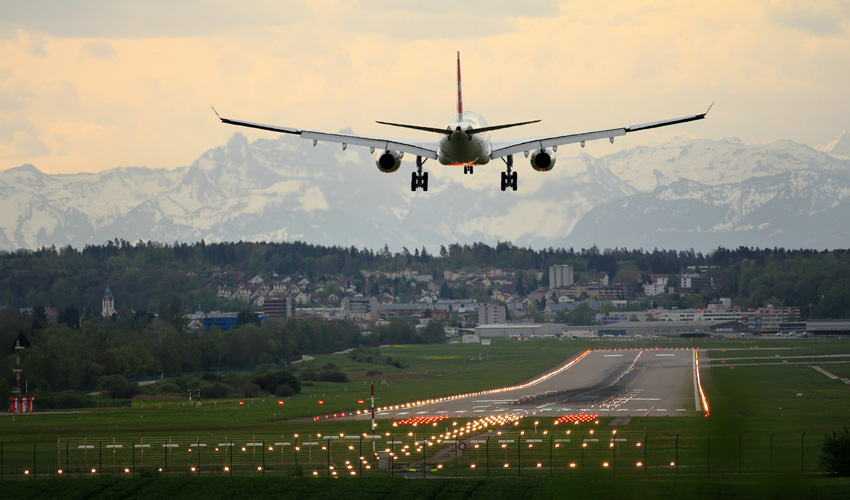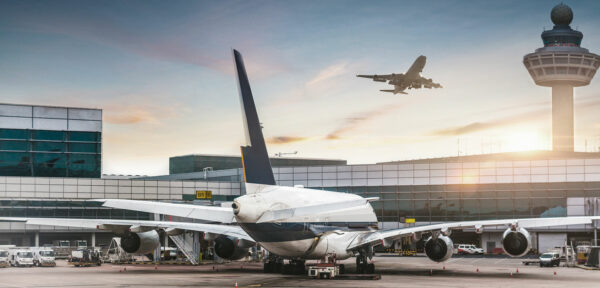Several things have changed since the coronavirus outbreak irrupted our lives. As the virus evolved, bouncing back its impacts on societies and businesses became a truly odyssey. Especially for the aviation, the past months have been particularly challenging. The dramatic decrease in air traffic forced operators to look up for alternative ways to maintain the continuity of services. Now that national lockdowns are gradually being eased, a new chapter opens, in which ensuring social distancing at airports takes the leading role.
Some time ago hubs used to be dense, populous, and extremely dynamic. Today, they face the limitations proper of a pre-vaccine world. In this New Normal, measures like temperature screening, enhanced cleaning and the use of personal protective equipment reflect the commitment of the industry with keeping the public safe. And it seems that all these efforts to create confidence among passengers are paying off. Travel bookings are slowly picking up as some people feel ready to take their so annihilated summer vacations.
The implementation of sanitary regulations constitutes a great change not only for travelers, who will experience a much different way of flying. Operators will be dealing with more complex processes since the execution of tasks will demand more time and resources. This can lead to a capacity crunch in the sector, especially as passenger numbers start to ramp up. So, enforcing physical distancing at airports may no longer be feasible. What can then be done to prevent this?
On-time performance: A front-runner strategy to keep social distancing at airports
Cutting queues has been an important topic for aviation decision-makers in the last decades. While some experts recommend implementing self-service technologies to speed up processes, others see queuing as an inevitable part of traveling by air. It may not be possible to eliminate airport bottlenecks at all, but it is key to take steps to manage them.
So, says an old proverb, “When solving problems, dig at the roots instead of just hacking at the leaves.” To address agglomerations, the typical queuing behaviors in the terminals should be analyzed at first. Questions like “what equipment and staff do travelers interact with?” and “how do these interactions take place?” can be useful to identify the factors that trigger crowding.
Airports are not always able to invest in infrastructure so they must operate within the existing capacity. On-time performance (OTP) takes center stage when it comes to reaching operational efficiency. If activities are carried out as scheduled, costs remain under control, and productivity increases. The incorporation of this performance indicator in daily business helps to eliminate unnecessary waiting times and therefore, social distancing at airports can be granted.
Maintaining good on-time performance requires a high degree of integration between staff and technologies. Here is where smart planning tools come into play.


Planning is the pillar to flexibly respond to the New Normal
There is still much uncertainty around restarting aviation. The highly volatile context hampers the use of traditional methods to plan operations. Seeking for a more agile response, airports rely on smart solutions that enable situational adjusted planning. Based on COVID-conscious risk assessments, it is possible to run what-if scenarios involving different demand forecasts.
Such an approach facilitates the development of quick responses aimed to maintain social distancing at airports. If all arriving passengers come from regions most affected by the pandemic, resources will have to be assigned in a way that guarantees that all these travelers stay together. Thanks to advanced algorithms, the contact with groups that pose a lesser risk can be minimized.
An optimal allocation of personnel and equipment within the field of tasks is a catalyst to improve on-time performance. For this reason, planning is decisive to avoid congestions:
- Upon arrival, operators can ensure passengers are spread evenly across multiple shuttle buses.
- Since the conduction of temperature screenings extends the stay at the terminal, keeping track of the duration of these examinations is crucial to prevent misconnections.
- At check-in counters, staff distribution can be adjusted in real-time based on flight schedule and traffic levels.
- When aircraft cleaning procedures are finished according to the plan, travelers do not have to worry about running into people whose flight has been assigned the same gate.
- Automation at security checkpoints is sometimes limited. Planning enables a maximized utilization of the available infrastructure.
- A smart baggage belt assignment prevents the formation of large people clusters.
The challenge of ensuring social distancing at airports in the long run
Now that resuming operations is a reality, a different approach to things is necessary to face the post-coronavirus challenges. The sanitary conditions imposed by local authorities are transforming traveling as we know. From all these measures, social distancing at airports may be the most critical one, since the virus mainly spreads through respiratory droplets, when people are in close contact with one another (within about 1.8 m).
Although passenger volumes are nowhere near where they were pre-pandemic, decision-makers should start evaluating effective procedures to manage crowding. As more routes are being opened to satisfy the increasing demand, risk-based planning becomes paramount. The reason: Not only to prepare for the future but also to foster a stronger collaboration among industry stakeholders.
No airport around the world is like the other. Capacity restraints can put the viability of physical distancing into question. However, by adopting on-time performance, new possibilities to re-think processes come up. It is not about achieving 100% punctuality, but to deliver results against a target that considers the particular landscape. Such understanding is the fundament for the creation of strategies to increase operational resilience.





0 comments on “How Can On-Time Performance Contribute To Social Distancing At Airports?”